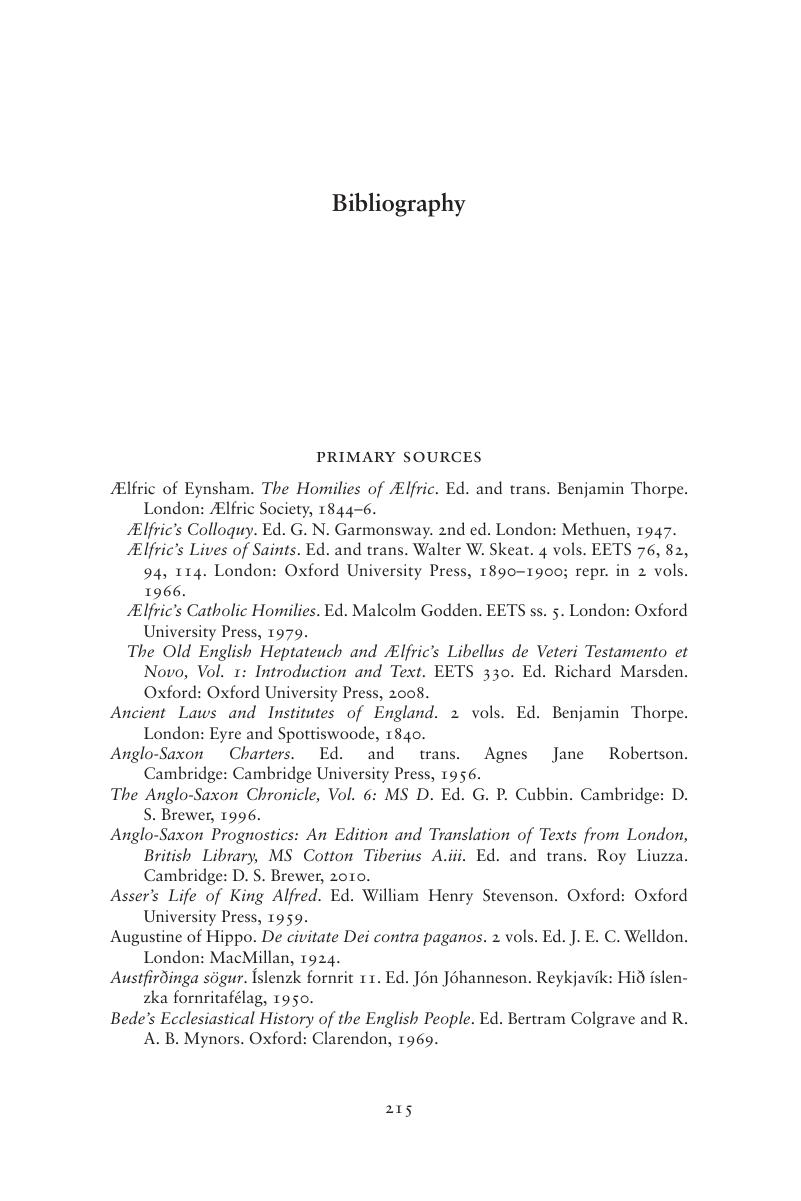Book contents
- The Old English Penitentials and Anglo-Saxon Law
- Studies in Legal History
- The Old English Penitentials and Anglo-Saxon Law
- Copyright page
- Dedication
- Contents
- Book part
- Introduction Legislation, Custom, and the Sources of Early English Law
- 1 The Old English Penitentials and Their Reception
- 2 Legal Change, Vernacular Penitentials, and the Chronology of Old English Prose
- 3 The Law of the Estate
- 4 The Law of the Household
- 5 Caring for the Body
- 6 Caring for the Mind
- Conclusion
- Bibliography
- Index
- References
Bibliography
Published online by Cambridge University Press: 05 June 2015
- The Old English Penitentials and Anglo-Saxon Law
- Studies in Legal History
- The Old English Penitentials and Anglo-Saxon Law
- Copyright page
- Dedication
- Contents
- Book part
- Introduction Legislation, Custom, and the Sources of Early English Law
- 1 The Old English Penitentials and Their Reception
- 2 Legal Change, Vernacular Penitentials, and the Chronology of Old English Prose
- 3 The Law of the Estate
- 4 The Law of the Household
- 5 Caring for the Body
- 6 Caring for the Mind
- Conclusion
- Bibliography
- Index
- References
Summary

- Type
- Chapter
- Information
- The Old English Penitentials and Anglo-Saxon Law , pp. 215 - 234Publisher: Cambridge University PressPrint publication year: 2015



